NIL
The House v. NCAA settlement is officially approved. What does it mean for Duke and college sports?
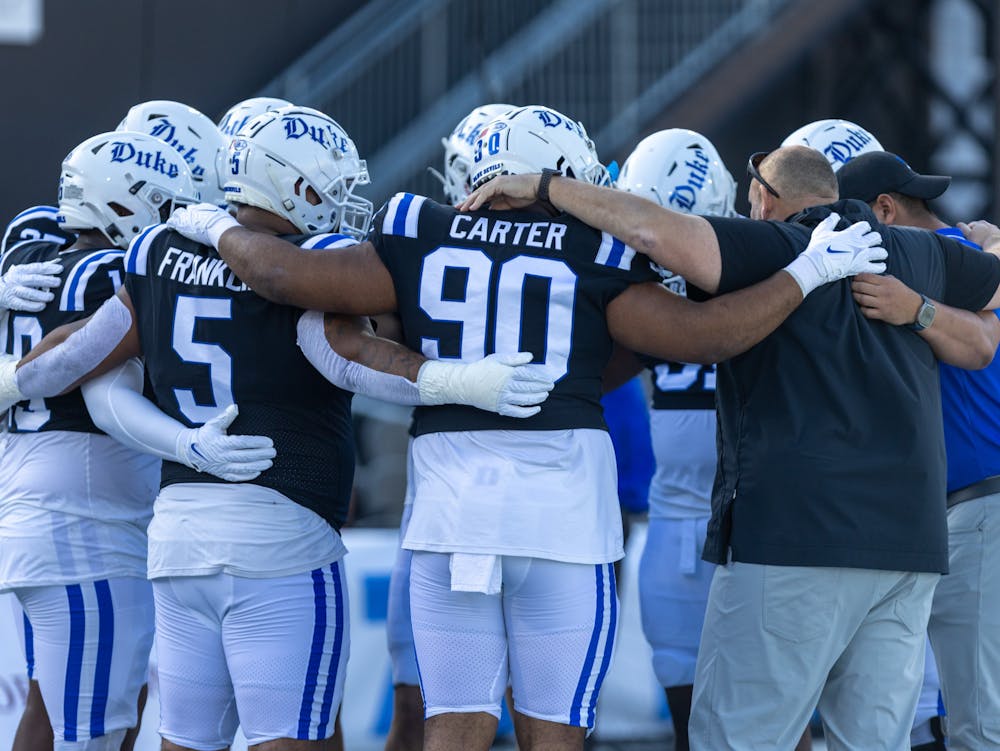
Judge Claudia Wilken has finalized the consequential settlement that will fundamentally change college sports.
More than a year after the two sides in the House v. NCAA case voted to settle, Wilken approved the revised terms Friday evening. Schools will be able to directly pay players from their athletic department budgets for the 2025-26 school year, also known as revenue sharing.
Ever since student-athletes began profiting off their name, image and likeness (NIL) in 2021, the sport has faced a roller coaster of litigation and uncertainty. NIL money has already transformed college sports, and this approval further revolutionizes the relationship between athletes and schools. Athletes can now earn financial benefits for their performance in three ways: scholarships, NIL deals and revenue sharing.
Duke athletics did not immediately respond to The Chronicle’s request for comment on the settlement.
House v. NCAA settlement details
The settlement resolves three antitrust cases against the NCAA. Former Duke football captain DeWayne Carter is one of three plaintiffs in Carter v. NCAA, and former Arizona State swimmer Grant House is the namesake plaintiff in the main case.
The athletes argued that the NCAA, through control of TV markets and NIL, was illegally limiting their true playing value, which they said was more than scholarships and education funding. The NCAA and power conferences — ACC, SEC, Big Ten, Big 12 and Pac 12 — settled with the plaintiffs in May 2024.
The two main parts of the settlement are payments to past players and a framework for paying those of the future. More than 88,000 former student-athletes have filed claims for the back-pay portion of the case, with $2.8 billion from the NCAA and power conferences intended to compensate players from 2016-21 who were not able to profit off of their name, image and likeness.
The second and more consequential part of the settlement, revenue sharing, allows schools to use their athletic department budgets to directly pay players. Currently, schools can only work with collectives, independent booster-funded organizations that raise money from the respective team’s fans and corporations. Collective money pays players, not the schools.
But now that the settlement is officially approved, schools can use up to roughly $20.5 million of their TV revenue, ticket sales and merchandise, among other things, to directly pay student-athletes. That number is equivalent to 22% of the average power conference school’s athletic department revenue. It will also increase over the next 10 years and will likely eclipse $30 million by the 2034-35 season. For Duke’s last reported athletics year of 2023-24, the total revenue figure was $166.8 million, the 28th-highest in the nation.
A good comparison to understand revenue sharing is professional sports leagues’ salary cap. For instance, the NBA’s salary cap in the 2024-25 season was roughly $140.6 million. It bars teams from spending over this amount (although in the NBA, teams can pay luxury taxes and have exceptions to work around the figure). The revenue-sharing structure will be in the same format; teams get the roughly $20.5 million amount to pay out, but they are limited to that cap, and can choose to pay the full amount or less.
“I think that all we’re looking for is consistency, and not [the guidance] changing every week, or every two weeks, or every month,” said Terrell Smith, Duke’s assistant director of athletics and NIL strategy, prior to the approval. “We will know … how we need to operate, at least for the next year.”
He underscored the stability the case provides and the importance of guidance, because at the end of the day, the majority of the athletic departments are trying to play by the rules and navigate the ever-changing landscape.
“You have to play the card that you were dealt,” Smith said. “But if after every time you put a card down, you’ve got to reshuffle the deck and play again, it’s like the game is never over.”
Athletic departments will face tough conversations around how to fund their vast array of varsity sports, especially the “non-revenue sports,” those excluding football and basketball. In the latest Equity in Athletics Disclosure Act report, more than 70% of Duke’s athletic department revenues came from football and men’s basketball in the 2023-24 season.
New enforcement agency: The College Sports Commission
In a significant change, the NCAA will no longer have enforcement power on the rules of the settlement. A new College Sports Commission (CSC) will be the final arbitrator to enforce the salary cap-esque structure from revenue sharing to ensure that schools don’t exceed their allocated budgets to directly pay players. They will help LBi Software, a New York technology company, to ensure compliance with revenue sharing cap and also have the power to “impose such fines, penalties or other sanctions as appropriate” on schools who break the rules.
The CSC will be headed by a CEO chosen by power conference commissioners. MLB executive Bryan Seeley was hired Friday night for the position due to his investigative and legal experience. Power conference commissions will make up a board that Seeley will report to. The NCAA will still address issues surrounding academics and eligibility, but the CEO will largely handle the terms of the settlement.
Ed Tiryakian, a lecturing fellow of markets and management studies at Duke and a former agent of Blue Devil men’s basketball legend Christian Laettner, believes that the new enforcement mechanism is “great on paper” but “tough in person.” That said, fresh, business-oriented leadership could be a positive step in the innovation of college sports.
“I think the sea change that I hope happens [is] that the commission says business first, framework second,” Tiryakian said. “I think a commission says, ‘Let’s have a business development person on our commission … How do we monetize [college sports], but let’s put the rules in place that makes everyone happy.’”
Get The Chronicle straight to your inbox
Sign up for our weekly newsletter. Cancel at any time.
Roster limits
The biggest point of contention between Wilken and approving the settlement on the final hearing date in April was roster limits. The settlement removes scholarship limits to give the NCAA more antitrust protection and pave the way for revenue sharing. The replacement is roster limits, so big schools can’t theoretically hoard talent with immense NIL and revenue sharing sums. Schools can give as many or as few scholarships as they want, but they can’t hold more than a certain amount on a roster (105 for football, 15 for basketball, 34 for baseball, 25 for softball). This link includes the full list of roster limits.
However, Wilken was concerned about current student-athletes who might have their spots removed with roster limits. She proposed “grandfathering in” the roster limits to protect current athletes. The conferences and attorneys took her suggestion and came back with a revised settlement proposal, which says that athletes who were on a 2024-25 roster and high school recruits committed for the 2025-26 season do not count towards a school’s roster limits through their eligibility expiration.
As part of the compromise, schools are not forced to retain these players they already cut in anticipation of the settlement, but these athletes can transfer, maintain eligibility and not count towards a roster spot on any team.
NIL deals, Deloitte and collectives
Another part of the settlement is regulation on NIL deals. Some NIL deals — like Cooper Flagg’s with Gatorade — are direct sponsorship deals with companies. Others are with the school’s collectives, the booster-funded independent organizations that raise money from fans and alumni, and they connect student-athletes with NIL opportunities. The collectives typically partner with local businesses to facilitate player event appearances and social media posts.
Duke’s main collective is the Durham Devils Club, providing NIL deals for a vast array of Blue Devil athletes. Absent from this list is basketball, which earns funding from the “One Vision Futures Fund,” a low-profile non-profit started by Duke alums Jeff Fox, Dan Levitan and Steve Duncker.
NIL deals will still occur and will not be capped, unlike revenue sharing. But in hopes for further transparency, the settlement requires any NIL deal past $600 to be fully disclosed.
Accounting firm Deloitte and the College Sports Commission CEO will operate “NIL Go,” a clearinghouse to ensure NIL deals over $600 are of “market value,” so they don’t extend beyond what the player actually brings to the team. Although the process is not entirely finalized, Deloitte will look at a database of comparable past NIL deals to define what is market value. They will also make sure the payor has a valid business purpose for the deal.
These will mostly affect player deals with boosters and collectives. If Deloitte rejects a deal, players have a chance to resubmit it with the suggested modifications. If a deal is rejected a second time, the CSC, CEO and a court process will assess the deal’s validity.
It’s important to note that no NIL deal is supposed to be “pay for play,” meaning there should be some scope of work for the athlete outside of playing — whether it be social media posts, community service, event appearances or speaking engagements.
Josh Cox, director of operations for the Durham Devils Club, says this new regulation model is a positive step, but worries about its application due to the sheer number of deals coming in and because market value is tough to define for any individual athlete.
“In theory, I love it. In practicality, I think it’s going to be virtually impossible to do it properly,” Cox said. “I do believe that it’s beneficial. I do believe that it is a way to curb a little bit of this inflation that’s been going on for the last two years.”
Where do things go from here?
The terms of the settlement begin July 1, and with the approval, college athletes will receive money for the 2025-26 season. A completely new dimension to college sports is on the horizon. Schools have a choice whether to opt in or opt out to the settlement, and many smaller conference teams may choose to not use revenue sharing.
There will likely be further litigation on both revenue sharing and the legality of the Deloitte NIL clearinghouse. Additionally, there are increasing questions about the role revenue sharing plays within Title IX, a 1972 law preventing sex-based discrimination in education programs.
The settlement approval doesn’t provide any guidance on how schools should distribute revenue sharing funds in accordance with Title IX, arguing this is an antitrust suit. It states that there is nothing in the settlement to “prevent or prohibit schools from distributing benefits and compensation … in a manner that complies with Title IX,” but also that “class members will have the right to file lawsuits arising out of those violations.”
Even with the question marks, the approval provides a welcome sense of direction for athletic departments in a field that is often ever-changing and unclear.
“There’s always time for people to be bad actors, but I’ll say 99.9% of the people are trying to do everything right,” Smith said. “We just need to know, or would like to know, what the rules are, and then we’ll play within those rules.”
At the same time, while well-resourced schools may be positioned to take on this nascent world, small conference teams still could feel left behind. Tiryakian framed it as a “major vs. minor league future,” with the power conferences maintaining the majority of high-quality talent and being able to lure in the rest via the transfer portal, leaving minor conferences akin to minor league baseball teams.
“I think we’ve entered a brave new world that’s a bit concerning for college athletics,” Tiryakian said. “I think you’re going to see a big segregation in terms of the haves and have-nots, and that’s what is worrisome to me about where we’re at in terms of the arms race. There’s just gonna be a lot of people who drop out of the arms race.”
Whatever may be coming, Smith is bullish about the future of Duke in the NIL and revenue sharing space, especially with the infrastructure already put into place.
“I really think that Duke, we always find a way when we get in the space, to make sure this is better than what anyone else is doing,” Smith said. And I think once we know the guidelines, we’ll find a way to make it the best for our student-athletes.”
Another key development is a binding agreement to the settlement that power conferences have reportedly urged their members to sign. This would force teams in each conference to comply with the settlement terms and waive their rights to sue the CSC. This would help settle any discrepancy between state NIL law and the settlement. If teams have disputes with the CSC, they would use a third-party arbitration process rather than taking the commission to court. This comes after Tennessee Gov. Bill Lee signed a bill in May protecting state schools from enforcement penalties in the settlement.
There is also talk of the need for federal intervention. In April, a host of college administrators, conference commissioners, coaches and players traveled to Capitol Hill to lobby elected officials for greater regulation on NIL. Specifically, they lobbied for standardization of NIL regulation, antitrust protection for them and the NCAA to prevent future lawsuits. A bipartisan group of U.S. senators have discussed legislation on compensation in college sports, but nothing has come to fruition.
President Donald Trump reportedly was planning to create a college sports commission, but the White House announced its pause May 22. Details of its role and scope were limited, but it planned to study the regulation of collectives, the transfer portal, the various NIL rules across states and the implications of Title IX within the new revenue sharing framework. The hope is that a growing push for legislation will help bring more clarity in college sports.
Abby DiSalvo contributed reporting.

| Audience Engagement Director
Ranjan Jindal is a Trinity senior and audience engagement director of The Chronicle’s 121st volume. He was previously sports editor for Volume 120.
NIL
$1.6 million WR makes NIL announcement before College Football Playoff

Alabama and Oklahoma are about to kick off the College Football Playoff on Friday evening and ahead of the big match-up, one notable player shared some NIL news. With Tide coach Kalen DeBoer facing a particularly big game, stakes are high for Friday’s battle. But at least one player has already had a productive Friday.
Alabama wide receiver Ryan Williams announced an NIL endorsement deal on social media on Friday afternoon. Williams, who has been tagged with a $1.6 million NIL value by On3, added another corporate endorsement to his already crowded NIL roster. With the eyes of college football heading to Alabama’s battle with Oklahoma, Williams had a timely component in his statement.
Williams’ new NIL deal is with Eat Just, Inc. which develops and markets plant-based alternatives to eggs and meats. Williams’ Instagram post depicts the talented wide receiver apparently chowing down on what appears to be a chicken alternative from Eat Just.
Among Williams’ other NIL deals include EA Sports (for whom he was a cover athlete for EA’s College Football 26 game), Uber Eats, Beats by Dre, New Era, and clothier Hollister.
On the field, the 6′ wide receiver continues to show flashes of the massive talent that earned him a starting spot as a 17-year old for the Tide in 2024. But he has struggled with consistency. Last season, Williams finished with 48 receptions for 865 yards and eight receiving scores, with two more rushing touchdowns. In 2025, he has 42 catches for 631 yards and four touchdowns.
Wiliams will not be eligible for the 2026 NFL Draft, but figures to be a significant Draft prospect based on his speed and ball skills.
Alabama is facing a fourth loss in consecutive seasons. During Nick Saban’s nearly two decades, he did not have a four-loss season after his initial 2006 campaign. With rumors of Kalen DeBoer being a strong candidate for the Michigan coaching job, there’s plenty on the line during Friday’s game.
Alabama is a slight underdog in Friday’s College Football Playoff first-round battle. WIlliams could provide a key to the game. In Alabama’s three losses this year, Williams has not exceeded 45 yards receiving or caught a touchdown. So it’s safe to say that Tide fans, as well as Eat Just, hope that Williams eats well on Friday evening.

NIL
CNBC ranks Top 25 college athletic programs by valuation
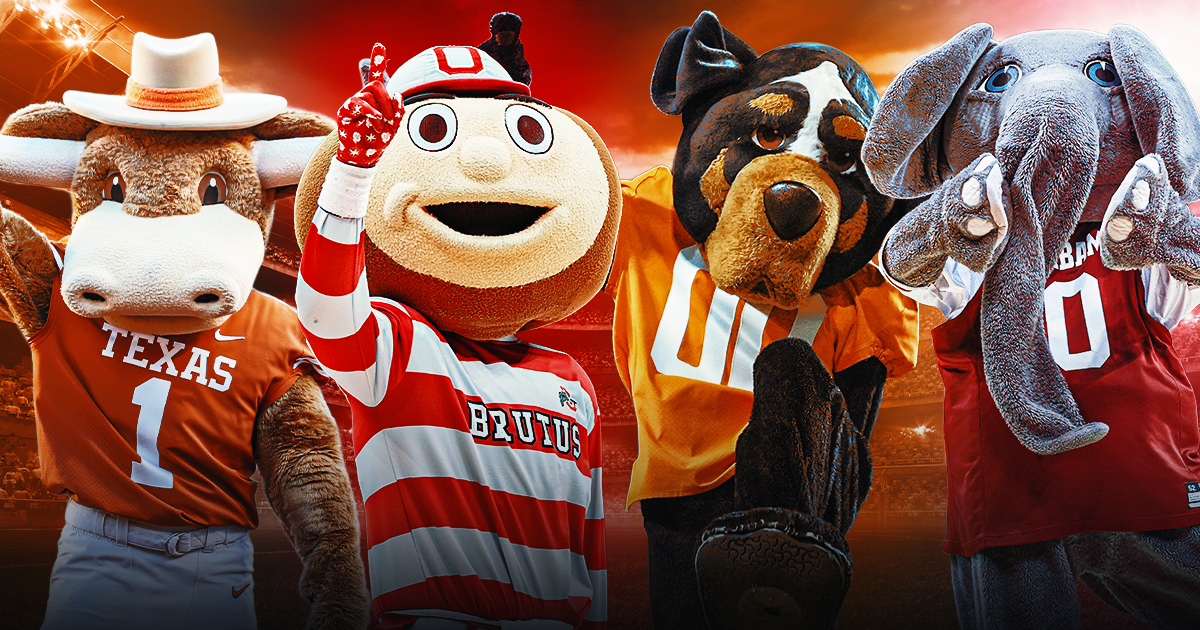
As the 2025 calendar year rounds out, CNBC has ranked the top-25 college athletic programs by valuation. Texas has skyrocketed to the No. 1 spot, worth $1.48 billion. This number is 16% more than it was last year ($1.28 billion). Ohio State‘s valuation grew by 2%, but it still fell from No. 1 to No. 2.
Per CNBC, “the 75 most valuable athletic programs for 2025 are worth a combined $51.22 billion, 13% more than the value of the top 75 in last year’s rankings”. With more money poured into programs by the day with an emphasis on NIL, this isn’t quite a surprise.
SUBSCRIBE to the On3 NIL and Sports Business Newsletter
The entire list is below. Of note, it includes five programs from the SEC, including two valued at more than $1.3 billion, per CNBC.
The University of Texas comes in at No. 1 in the rankings, worth $1.48 billion. The athletic program brought in $332 million worth of revenue in 2024, helping usher in a 16% YOY (year-over-year) value change. Last year, the program was ranked No. 2 (+1).
It shouldn’t be a surprise that Texas sits atop all programs, as starting quarterback Arch Manning ranks No. 1 in On3’s NIL Valuations ($5.3 million). Manning, in his first season as the Longhorns’ starting quarterback, passed for 2,942 yards and 24 touchdowns with seven interceptions this season. Manning is one of two Texas athletes ranked inside the Top-100, alongside EDGE Colin Simmons.
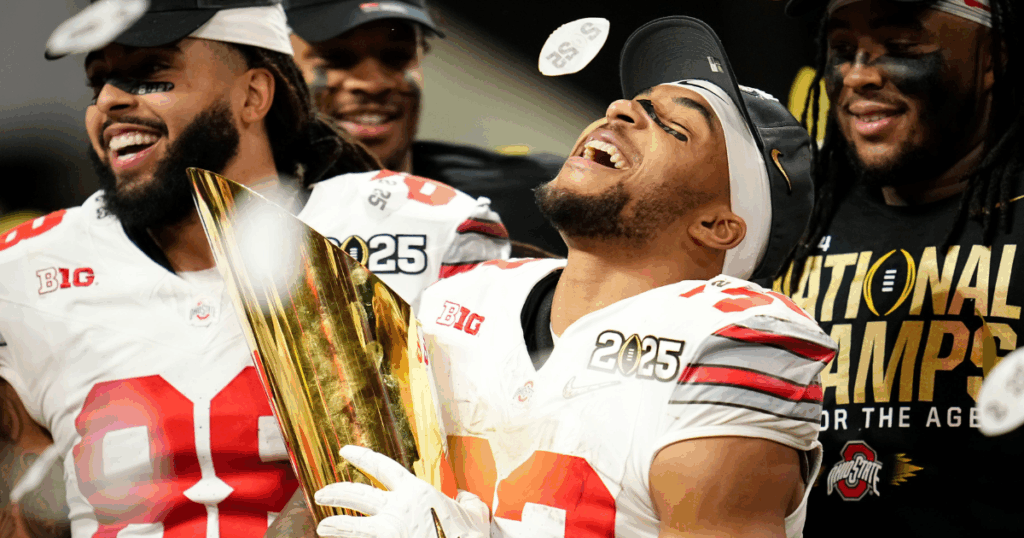
THE Ohio State University comes in at No. 2 in the rankings, worth $1.35 billion. The athletic program brought in $255 million worth of revenue in 2024, helping usher in a 2% YOY value change. Last year, the program was ranked No. 1 (-1).
Although the program slipped one spot, Ohio State is still a juggernaut. Star wide receiver Jeremiah Smith ranks No. 3 in On3’s NIL Valuations ($4.2 million) and is one of three Ohio State football players ranked inside the top-13. Quarterback Julian Sayin sits at No. 10 ($2.5 million) and defensive back Caleb Downs sits at No. 13 ($2.4 million).
Texas A&M University comes in at No. 3 in the rankings, worth $1.32 billion. The athletic program brought in $266 million worth of revenue in 2024, helping usher in a 5% YOY value change. Last year, the program was also ranked No. 3.
With the football program heading to the College Football Playoff for the first time ever, Texas A&M remained the third most profitable athletics program in the country. Quarterback Marcel Reed ranks No. 19 on On3’s NIL Valuations ($2.1 million) and Paul Hornung Award winning receiver K.C. Conepcion ranks No. 52.
The University of Georgia comes in at No. 4 in the rankings, worth $1.16 billion. The athletic program brought in $242 million worth of revenue in 2024, helping usher in a 22% YOY value change. Last year, the program was also ranked No. 7 (+3).
Georgia jumped three spots after bringing in $242 million worth of revenue in 2024. This was massive in hauling in USC transfer receiver Zachariah Branch, who has been a massive contributor for the Bulldogs’ College Football Playoff team. Branch, who ranks No. 85 On3’s NIL Valuations, hauled in 73 catches for 744 yards and five scores this year.
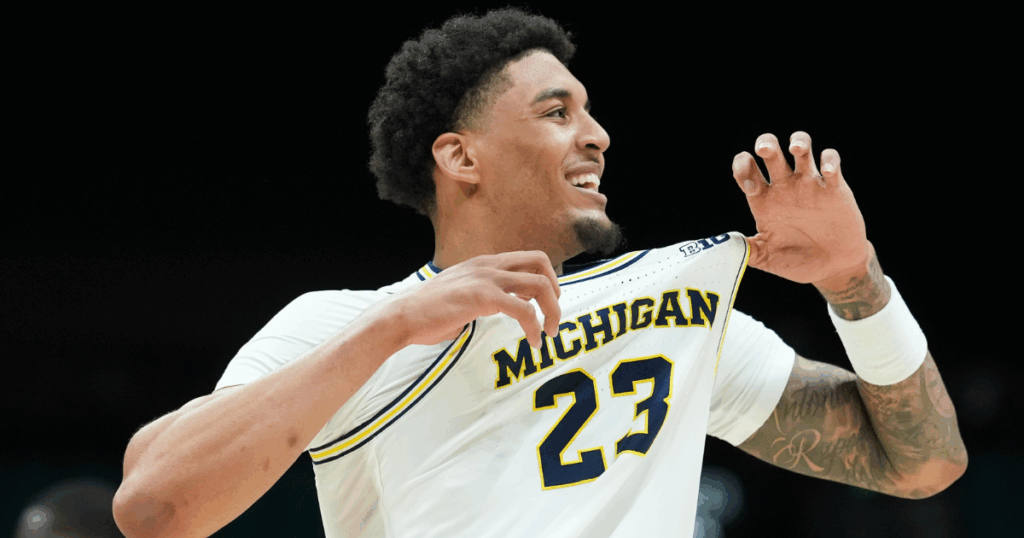
The University of Michigan comes in at No. 5 in the rankings, worth $1.16 billion. The athletic program brought in $239 million worth of revenue in 2024, helping usher in a 9% YOY value change. Last year, the program was ranked No. 4 (-1).
Although Michigan fell one spot from last year’s valuation, it still ranks second among Big Ten programs. Star forward Yaxel Lendeborg, who ranks No. 17 On3’s NIL Valuations ($2.3 million), has been a superstar for the Wolverines on the basketball court. Lendeborg is averaging 16.4 points and 7.2 rebounds for an undefeated squad under head coach Dusty May.
The University of Notre Dame comes in at No. 6 in the rankings, worth $1.13 billion. The athletic program brought in $235 million worth of revenue in 2024, helping usher in a 17% YOY value change. Last year, the program was ranked No. 6.
Feelings are still hurt around the Notre Dame football program after being snubbed from the College Football Playoff, but that’s nothing a little cash can’t fix. The ND athletics program hauled in $235 million worth of revenue last season, but it remained at No. 6. Heisman Trophy finalist running back Jeremiyah Love was Notre Dame‘s highest ranked player in On3’s NIL Valuations ($1.6 million).
The University of Tennessee comes in at No. 7 in the rankings, worth $1.12 billion. The athletic program brought in $234 million worth of revenue in 2024, helping usher in a 19% YOY value change. Last year, the program was ranked No. 9 (+2).
Tennessee‘s athletics program is evaluated at $1.12 billion, good for fourth most in the Southeastern Conference. Freshman forward Nate Ament is the highest earning player in the athletics program, ranking No. 64 in On3’s NIL Valuations.

The University of Southern California comes in at No. 8 in the rankings, worth $1.10 billion. The athletic program brought in $242 million worth of revenue in 2024, helping usher in a 19% YOY value change. Last year, the program was ranked No. 12 (+4).
USC jumped four spots after a massive 2024 calendar year, which brought in $242 million worth of revenue. This ushered in a 19% YOY value change, one of the biggest of all the teams in the rankings. Quarterback Jayden Maiava was the program’s highest earning player, ranking No. 21 in On3’s NIL Valuations ($2.1 million)
The University of Alabama comes in at No. 9 in the rankings, worth $1.09 billion. The athletic program brought in $235 million worth of revenue in 2024, helping usher in a 11% YOY value change. Last year, the program was ranked No. 5 (-4).
In what could maybe be called the Nick Saban effect, Alabama dropped four spots in this year’s rankings. Quarterback Ty Simpson, who passed for 3,268 yards and 26 touchdowns this season, ranks No. 14 in On3’s NIL Valuations ($2.3 million).
The University of Nebraska comes in at No. 10 in the rankings, worth $1.06 billion. The athletic program brought in $221 million worth of revenue in 2024, helping usher in a 12% YOY value change. Last year, the program was ranked No. 8 (-2).
Finally, the Cornhuskers come in ranked No. 10 with a $1.06 billion valuation. Although it ushered in $221 million, they fell two spots to No. 8. Former quarterback Dylan Raiola, who just entered the Transfer Portal, was the program’s highest-earning player this season. He ranked No. 9 in On3’s NIL Valuations ($2.5 million).
Programs 11-25
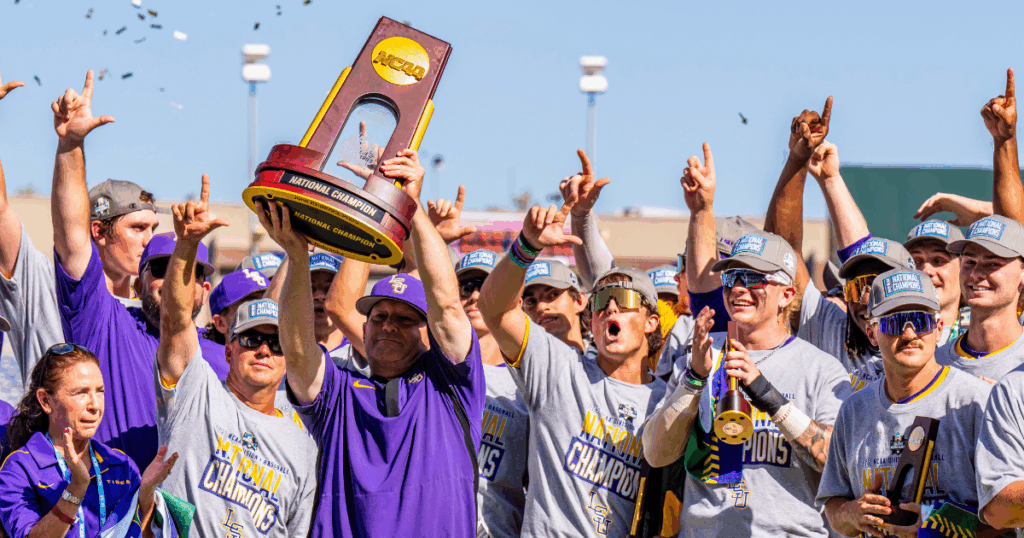
11. Penn State University ($1.06 billion)
12. Louisiana State University ($1.05 billion)
13. University of Oklahoma ($1.01 billion)
14. University of Florida ($975 million)
15. University of Kentucky ($910 million)
16. University of Oregon ($880 million)
17. University of Wisconsin ($875 million)
18. Clemson University ($860 million)
19. University of Iowa ($835 million)
20. University of Illinois ($815 million)
21. University of South Carolina ($812 million)
22. Auburn University ($810 million)
23. Stanford University ($805 million)
24. University of Arkansas ($800 million)
25. University of Washington ($795 million)
NIL
Josh Hoover Enters Transfer Portal | TCU Football Faces Change
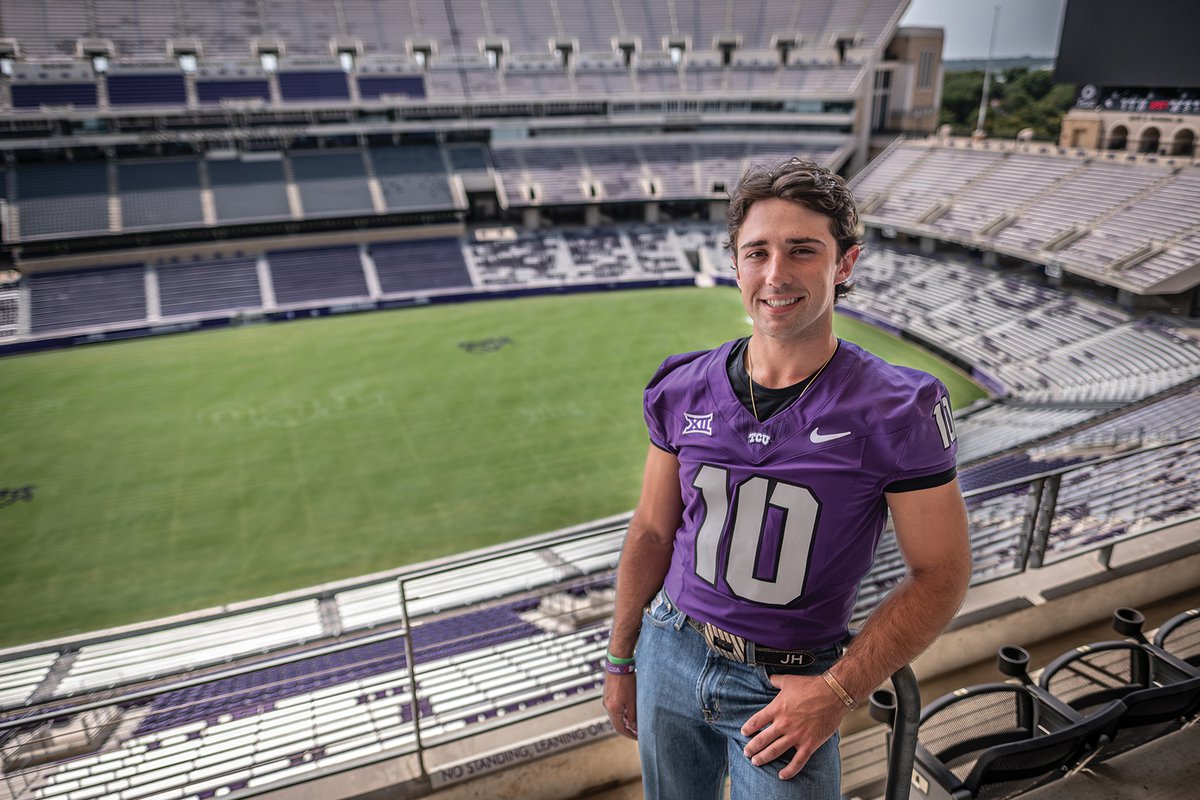
Well, the Dear John letter on Instagram we’ve all been dreading dropped on Thursday.
“First, I want to thank God for the opportunities that he has blessed me with to play this game. I’m so thankful to have had the opportunity to represent TCU for an incredible 4 years. It has been a dream to be able to play and graduate from this university and I will forever be grateful for that.”
But — there’s always a “but” — TCU quarterback Josh Hoover continued, “I will be entering the transfer portal.”
So, there it is. Well, hell. This one hurts because Hoover represented stability in a volatile era of name, image, and likeness, and the specter of the transfer portal. He was “our guy” in a sports culture where “our guy” barely exists anymore.
But alas … .
Josh Hoover is a fantastic person. We wish him the best.
Our man Ken Seals of Azle and then Weatherford High, who traveled back here by way of Vanderbilt, is presumably the starter for TCU’s Alamo Bowl game against Southern Cal. (Everybody remembers the last time TCU lost its starting quarterback right before the Alamo Bowl. It was epic.)
Thankfully, Kansas — the band, that is — taught us all about transience in 1977. Nothing lasts forever, especially in today’s college athletics’ revenue sports. Once upon a time, our guys stayed with us until the eligibility ran out. Today, our college athletes more resemble Mickey Rooney or Jennifer Lopez. (Can you believe that Mickey Rooney found eight wives?)
It’s TCU one day. Indiana the next?
The clickbaiting stations got on this immediately: Where will Josh Hoover land?
Miami, Oregon, Texas Tech. No, Lord, no … not Texas Tech!
The leader in the clubhouse appears to be Indiana, once a hotbed of college basketball. Bob Knight is somewhere beside himself — that is, red-faced and expressing his emotions, shall we say, with the harshest language ever known to man — that the Indiana football program is, one, No. 1 in the country; and, two, that the football coach there is making something like $93 million over eight years.
However, Curt Cignetti has made the Hoosier State a destination for football transfers.
Indiana is also the school Hoover initially committed to as a senior at Rockwall Heath. He had been lightly recruited with only two major suitors — SMU and Indiana. At the helm at SMU at the time was, of course, Sonny Dykes. When Dykes took the TCU job he reached back out to Hoover, who jumped at the chance to come to Fort Worth. He recalled to us in September that on his recruiting visit he “loved it here.”
Things are different at Indiana since Hoover’s change of direction. Different coach and drastically different direction.
Just last year, Hoover turned down a lucrative offer to go to Tennessee. He declined it, he said, because he had already committed to returning to TCU. And the pull of money isn’t the only reason he’s leaving. With one year of eligibility remaining, he likely wants to polish his NFL prospects by playing in bigger games.
That’s not to say that can’t or won’t happen here. But a place like Indiana — whose quarterback this season just won the Heisman Trophy — is likely to open the year in the top 10, playing in the media-darling Big Ten Conference.
Suffice to say, Hoover will be an attractive option for a lot of programs.
His 9,629 passing yards and 71 touchdown passes will likely be the most of any QB in the portal. In 2024, he set a school record with 3,949 passing yards. Hoover also has 17 wins over the past two seasons.
“I want to Thank Coach Dykes for giving me the opportunity to play at TCU. I want to thank Coach Briles and the rest of the coaching staff for pushing me to be my best on and off the field.
“Lastly, I want to thank my teammates for all of the memories that we’ve shared together. This place has allowed me to meet some of my best friends, and I will always be grateful for that. I’ve prayed about this and decided that I will be entering the transfer portal.
“God Bless & Thank you TCU”
We’ll shed a tear, take a sip, and move on. It’s the only option.
So long, farewell, Josh Hoover.
Auf Wiedersehen, goodbye.
NIL
Darian Mensah’s millions give college football players leverage over NFL
Updated Dec. 19, 2025, 4:05 p.m. ET
- Duke quarterback Darian Mensah is returning to college instead of entering the NFL Draft.
- Mensah will earn more money by staying at Duke than he likely would have as an NFL rookie.
- The decision highlights how private NIL deals are making college football competitive with the NFL for talent.
Darian Mensah finally pulled off what eventually had to happen, further underscoring a booming college football economy that isn’t slowing down.
An elite quarterback chose college football over the NFL. And will make more money because of it.
Mensah, who led Duke to its first outright ACC championship since 1962 in his first season after transferring from Tulane, will make — at the very least — the back half of a two-year, $8 million deal he signed prior to this season.
If Mensah were to leave for the NFL, he’d make half that or less for one season — depending on where he was selected in the 2026 NFL Draft.

Stay or go is no longer a professional decision. It’s now, in most cases, a monetary move.
Just when you think paradigm change over the past four years of college football couldn’t be more dramatic, we now have quarterbacks staying in college for more money than they’d earn in the NFL.
College football isn’t the NFL’s minor league. It’s now the NFL’s competition.
The last quarterback selected in the first round of the 2025 NFL Draft was Jaxson Dart, who was the 25th overall pick and signed a four-year deal with the Giants averaging $4.2 million annually.
The first quarterback selected outside the first round was Tyler Shough, who was the 40th overall pick by the Saints and signed a four-year deal averaging $2.7 annually. The next selected was Jalen Milroe, 92nd overall by the Seahawks with a deal averaging $1.56 million annually.
Mensah, who more than likely would’ve been selected somewhere outside the first 50 picks, will earn $4 million by returning to Duke.
But that’s not the point of this exercise. The reality that Mensah will earn more in college football than the NFL, that he is choosing to delay playing at the highest level of football with a multi-year contract to stay in college, should tell you all you need to know about the flourishing private NIL economy.
The one area of unthinkable college football change the NCAA has no control over. And by no, I mean none.
Not with some special clearinghouse, or contrived czar, or play-nice agreement schools are refusing to sign. Private NIL is the heart of the college football economy, the only way to separate the haves from the have-nots.
You don’t really think the haves are going to sit there and take it, do you? They’re not going to nod their heads and spend 75% of their NCAA-mandated $20-23 million annual salary pool on football, and go along their merry way.
Because the elite of the elite players want more, and are they’re getting it through private NIL. It’s basic economics: supply and demand.
Ohio State overpaid for Quinshon Judkins and Will Howard and Caleb Downs, and won a national title because of it. Indiana outbid Georgia and Miami for Fernando Mendoza, and just polished off the first unbeaten regular season in school history.
Duke, meanwhile, won its first outright ACC title in more than six decades after overpaying Mensah. That’s return on investment, everyone.
A similar or marginally better revenue sharing deal isn’t convincing elite players to change schools. Private NIL deals are.
Players don’t have to stay at programs if they feel (take your pick) they’re not being developed properly, don’t have a chance to play for a championship, or just don’t like their situation.
Now they aren’t forced to leave college for the NFL, where the ability to earn was always the greatest draw — no matter what you read from players about taking their talents to (insert team here). Thanks, LeBron.
With that being said, of course.
Imagine the sheer power of telling the NFL no, and then picking up a larger paycheck because of it. And, bonus: Mensah, who has only played two seasons of college football — with at TD/INT ratio of 52/11 — can play another season and strengthen his draft stock.
Go bet on yourself, kid. Have another big season, make twice what you’d earn in the NFL, and then improve your draft stock for 2027. The next thing you know, you’ve moved into a first round projection and your rookie deal goes from seven figures to eight.
Quinn Ewers should’ve done it last season, and there will be more outside of Mensah who will do it this season. Brendan Sorsby and Sam Leavitt could leave for the NFL, and be selected in the first two days.
So could Ty Simpson and John Mateer and Nico Iamaleava. They’ll all make more — per season — in college football with private NIL deals. And that’s just at the quarterback position.
It’s a bear market for the elite of college football, and nothing is stopping it. Not contrived NCAA guidelines with no teeth, and not some document with no legal standing.
And no longer, as crazy as it sounds, the big, bad NFL.
Matt Hayes is the senior national college football writer for USA TODAY Sports Network. Follow him on X at @MattHayesCFB.
NIL
Arch Manning Channels Inner Tom Brady With Selfless NIL Decision
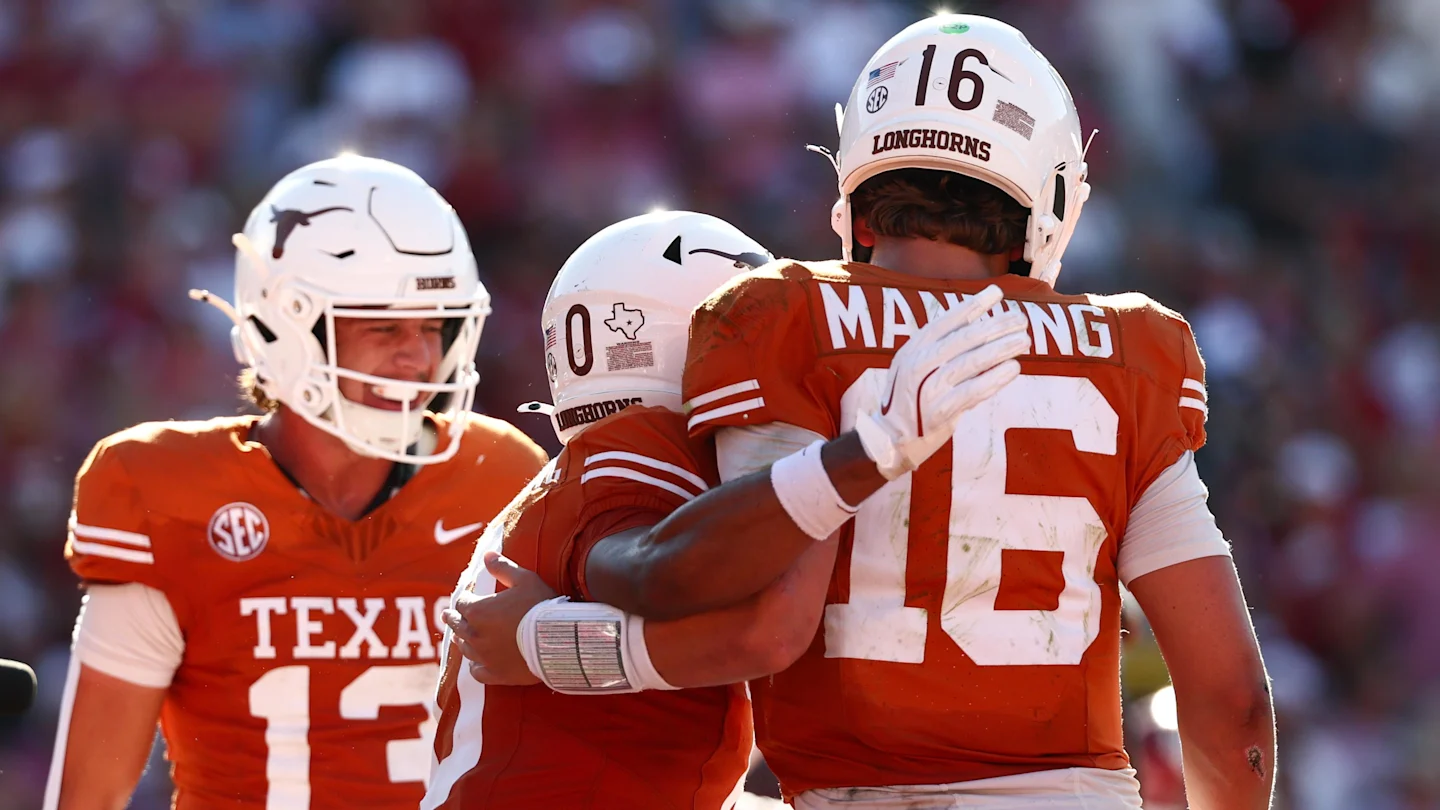
In today’s day and age of college football, the landscape of the sport has dramatically changed.
Now, instead of loyalty, coaches are forced to battle against the tampering of their best players in order to keep them from entering the portal for a big pay day.
And, as has been seen with USC and Texas A&M, players are also now announcing contract extensions to simply forgo that portal temptation, and stay with the school they are currently playing for.
Fortunately – and refreshingly – Texas Longhorns quarterback Arch Manning is taking a different approach.
According to reports from Inside Texas reporter Justin Wells, Manning is set to take a reduced payment from the Longhorns’ 2026 revenue-sharing pool in order to free up money to help his team both retain its own star players, as well as attack the transfer portal to improve the roster for a 2026 championship run.
A Tom Brady-Like Approach From Arch Manning

This move is eerily reminiscent of former NFL superstar Tom Brady, who was famous for taking pay cuts throughout his career in order to help his team acquire players in free agency in hopes of winning a championship.
Dallas Mavericks superstar Dirk Nowitzki also took a similar approach during his time in the NBA, helping Mark Cuban to add firepower to the roster by taking a massive pay cut.
The only difference is that this is college football, and in an era of a ‘look at me and my bank account’ mentality from the vast majority of college football, Manning’s selfless approach is a sight for sore eyes.
Manning Selfless Despite Elite Season
This is especially true considering the fact that Manning deservedly earned a major pay raise in his first season as the starter, completing 227 of 370 passes for 2,942 yards and 24 touchdowns with seven interceptions. He also rushed for 244 yards and led the Longhorns with eight rushing touchdowns, and had a receiving touchdown, accounting for 33 total scores for the season.
And, he was able to do all of that behind a leaky offensive line that ranked 67th in the country in pass blocking grade per PFF, while allowing 159 total pressures and 22 sacks – numbers that could have been much higher if Manning did not have such elite pocket presence and escapability. Not to mention, the offense being encumbered by the worst rushing attack the school had since 1944.
But instead of using that as leverage, like so many other players in the sport, Manning is giving Texas the Brady treatment – allowing them more money to dedicate towards NIL in the transfer portal in hopes of bringing in help to fix the team’s issues up front on the offensive line and in the running game, with potentially multiple additions at the running back spot.
Not to mention, it potentially allows Texas to make some major improvements at wide receiver, linebacker, and defensive back.
His decision also makes it much easier for Texas retain current players on the roster, who have no doubt been receiving tampering-level overtures from other schools and agents.
And it will be made possible in part thanks to a selfless act from Manning, who has now made he desire to win a national championship quite clear.
NIL
$54 million college football HC predicted to be candidate for high-profile NFL job
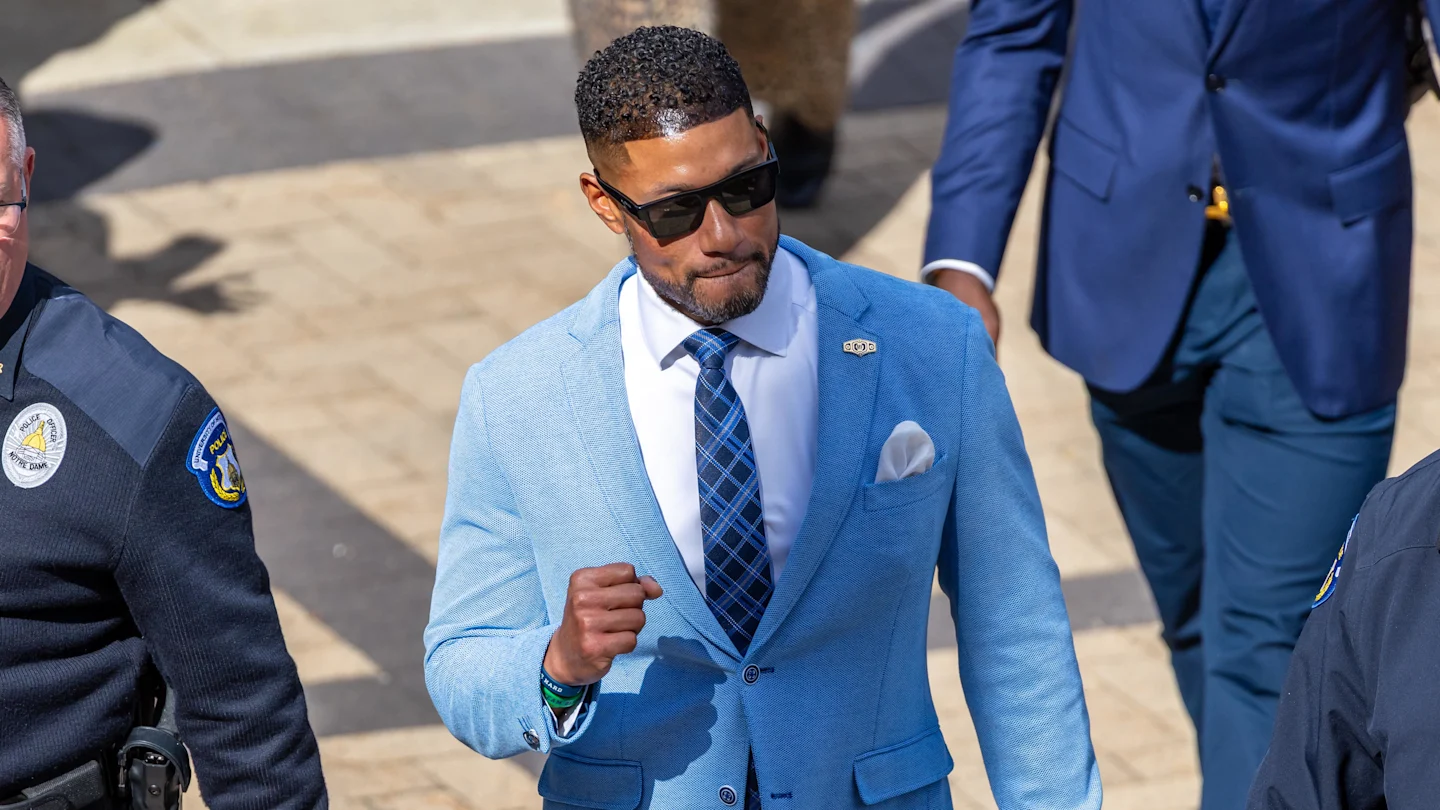
The college football coaching carousel spins on, but now some of that speculation includes one of the most prestigious positions in the NFL which came open this year, and a rising star in the NCAA is now being connected to the vacancy.
Notre Dame head coach Marcus Freeman is someone who should be considered in contention to become the next coach of the New York Giants franchise, according to college football analyst Josh Pate.
Freeman in play for the Giants?
“I just think Marcus Freeman is gonna be in play for the Giants job,” Pate said during an appearance with Bussin’ With The Boys.
“I think a lot of people in the college football administrative world know that/expect that. The agency world knows that/expects that. Not a done deal. I’m not going Schefter.
“If it’s even a remote possibility, and it certainly is, then that means the Notre Dame job may be open, as well. The coaching cycle is not close to done yet.”
NFL insiders seem to agree
The talk connecting Freeman to the Giants is not just random speculation at this point.
Freeman has also emerged as one of the most prominent names on the shortlist being assembled by the Giants franchise itself, according to The Athletic.
That is something to keep an eye on, as the NFL coaching bonanza is only just getting started, and Freeman is considered one of the best young coaching minds in circulation at any level.
LSU, Penn State, and Florida were all reportedly in communication with Freeman through his representatives when those schools were in the market for a coach, and the Giants could be next.
What Freeman has done at Notre Dame
Freeman has just completed his fourth season at the helm of the Fighting Irish program and boasts a 43-12 overall record, winning more than 78 percent of his games.
Freeman led Notre Dame to a No. 2 national ranking and an appearance in the national championship game against his alma mater a year ago.
His team went 10-2 this season and seemed poised for another berth in the College Football Playoff, before the committee reversed course on Selection Day and left the Irish out of the field, leading the school to decline playing in a bowl game.
What Notre Dame is giving Freeman
Freeman, who will turn 40 next month, signed a contract extension with Notre Dame last year that will lock him in with the school through the 2030 season, but if this carousel has proven anything, it’s that almost any contract can be gotten out of.
Notre Dame is a private school and is not obligated to publish its coaching salaries, but insiders contend his deal pays him $9 million per season and is worth a total of a reported $54 million.
But that raise is already somewhat out of date after Indiana recently inked Curt Cignetti to a new deal that will pay him $11.7 million per season.
The most recent reporting contends that Notre Dame and Freeman have not yet reworked his deal with the school, but that both sides are interested in coming to a new arrangement by the new year.
The faster they do that, the faster they can end talk of his leaving.
Read more from College Football HQ
-

 Motorsports1 week ago
Motorsports1 week agoSoundGear Named Entitlement Sponsor of Spears CARS Tour Southwest Opener
-

 NIL3 weeks ago
NIL3 weeks agoBowl Projections: ESPN predicts 12-team College Football Playoff bracket, full bowl slate after Week 14
-

 Rec Sports3 weeks ago
Rec Sports3 weeks agoRobert “Bobby” Lewis Hardin, 56
-
Sports3 weeks ago
Wisconsin volleyball sweeps Minnesota with ease in ranked rivalry win
-

 Motorsports2 weeks ago
Motorsports2 weeks agoDonny Schatz finds new home for 2026, inks full-time deal with CJB Motorsports – InForum
-

 Rec Sports2 weeks ago
Rec Sports2 weeks agoHow Donald Trump became FIFA’s ‘soccer president’ long before World Cup draw
-
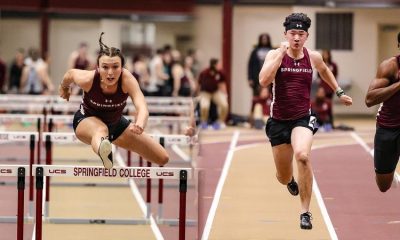
 Sports3 weeks ago
Sports3 weeks agoMen’s and Women’s Track and Field Release 2026 Indoor Schedule with Opener Slated for December 6 at Home
-

 Motorsports3 weeks ago
Motorsports3 weeks agoMichael Jordan’s fight against NASCAR heads to court, could shake up motorsports
-

 Rec Sports2 weeks ago
Rec Sports2 weeks agoBlack Bear Revises Recording Policies After Rulebook Language Surfaces via Lever
-

 Rec Sports2 weeks ago
Rec Sports2 weeks agoDavid Blitzer, Harris Blitzer Sports & Entertainment
































